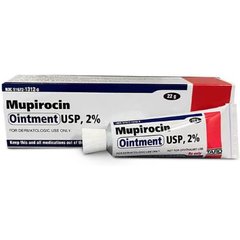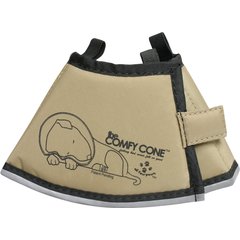Cracked Dog Paws? Common Causes and How to Care for Your Pup’s Cracked and Dry Paws
dima_sidelnikov/iStock / Getty Images Plus via Getty Images
Although a dog’s paw pads may feel rough, they are one of the most sensitive areas of the body.
The skin of the paw pads is thick, with fat tissue underneath composing most of the pad. These structures absorb shock, provide traction, assist in balance, and protect the paws against harsh surfaces.
It’s important to inspect your dog’s paws daily, especially if your furry friend spends a lot of time outside or on rough surfaces. Cracked dog paws can occur for many reasons and the condition can be painful.
Here’s what to look for when you inspect your dog’s paw pads and how to address cracked and dry paw pads.
Key Takeaways
- Dry paw pads can also be uncomfortable and can lead to deep cracks.
- Dry, cracked paws in dogs can have several causes, including underlying disease.
- Applying a moisturizing balm, butter, or wax product can help protect your dog’s paws from the elements.
What Are Cracked Dog Paws?
Normal wear and tear—such as scuffing and superficial cracks that don’t affect the texture of the paw pad’s surface—is normal.
However, when deep cracks or fissures develop, they split the paw pad and cause a painful injury. If cracks are deep enough to reach the blood vessels of the thick skin, bleeding will occur.
Numerous smaller cracks or cracks that join to form a diffuse network over the pad’s surface can be serious as well.
Dry paw pads can also be uncomfortable and can lead to deep cracks.
Dry or cracked paw pads can lead to:
-
Redness or discoloration of the paw pads
-
Behavior changes often related to pain, such as being less active, vocalizing, or a change in appetite
If you notice any of these signs along with cracked or dry paw pads, seek veterinary attention to determine the underlying cause and develop a treatment plan.
The Most Common Causes of Cracked Dog Paws
Dry, cracked paws in dogs can have several causes, including:
-
Running or playing on rough surfaces. Running on concrete or hiking on rough terrain (rocks, sharp objects) can cause excessive wear and tear on the paw pads.
-
Injuries. Paw pad injuries can cause cracks to form on the pad surface.
-
Exposure to extreme climates. Excessive heat or cold can cause a dog’s paws to dry out and crack, especially if they are exposed to de-icing salts.
-
Irritants. Chemicals such as ice melt (which can burn the paw pads), floor cleaners, and yard fertilizers can cause irritation and inflammation that can lead to cracked paw pads.
-
Nutritional deficiencies:
-
Lack of protein in the diet. Insufficient dietary protein causes a decrease in keratin, which makes up the outer skin layer. This leaves the paw pads vulnerable to injury.
-
Zinc deficiency. Inadequate zinc levels cause dry, cracked paws as well as hair loss, lethargy, and crusty skin lesions around the eyes and nose.
-
-
Underlying medical conditions:
-
Liver disease causes low protein levels in the body, which can lead to long-term, non-healing paw pad issues.
-
Allergies cause itchy skin and can lead to dry, cracked paw pads.
-
Autoimmune diseases such as pemphigus foliaceus cause the immune system to attack the skin, leading to blisters, crusting, and dry, cracked paw pads.
-
Hyperkeratosis, or an overgrowth of keratin, is a common cause of dry, cracked paw pads in senior dogs.
-
How To Care for Cracked Dog Paws
Inspecting your dog’s paw pads regularly can help you catch problems early. If your dog’s paw pads have superficial cracks that aren’t bleeding, you can attempt to treat them at home.
It’s important to keep the paw pads clean and moist to allow the cracks to heal. You can use grooming wipes or a soothing soothing oatmeal shampoo to clean paws after your dog comes inside after a walk or after they’ve been on rough terrain.
Always use products designed for dogs to prevent toxicity or a reaction.
After cleaning your dog’s paws, apply a moisturizing butter or balm to the paw pads (as well as the nose and elbows).
These products are thicker than a cream, so they will protect the paw pads longer and more efficiently. You can also cover your dog’s feet with waterproof booties to protect the vulnerable pads while they heal.
When To Call Your Vet About Cracked Dog Paws
If you notice cracks or excessive dryness on your dog’s paw pads for the first time, it’s a good idea to visit your vet so they can rule out any serious issues.
Your dog should visit the veterinarian as soon as possible if you notice any of the following:
-
Bleeding paw pad cracks
-
Swelling
-
Limping
-
Behavior changes
-
Excessive licking, chewing, or biting of the paws
Your vet will examine your dog’s paw pads and may run lab tests—such as liver enzyme levels and thyroid hormone testing—to check for any underlying medical conditions.
Treatment of Cracked Dog Paws
Treatment for cracked paw pads in dogs may include:
-
Antibiotics such as oral cephalexin, injectable Convenia®, or topical mupirocin if there is evidence of infection
-
Anti-inflammatory and/or pain medications such as carprofen or tramadol
-
Topical cleansing agents, such as a wound cleanser, medicated mousse, or medicated wipes.
Your vet will likely also send your dog home with a recovery cone to prevent them from licking off any medication that has been applied or causing further injury.
Prevention of Cracked Dog Paws
If you know your dog might be exposed to extreme conditions or if they have had dry or cracked paw pads in the past, you can help to avoid the condition in the future.
Take the following steps to prevent dry and cracked dog paw pads:
-
Clean your dog’s paws after walks
-
Protect them with footwear when walking or hiking on rough terrain
-
Use a pet-friendly de-icing agent or salt
Applying a moisturizing balm, butter, or wax product can help protect your dog’s paws from the elements.
These products can be a good substitute for dog booties because they put a barrier between your dog’s paw pads and ice, salt, dirt, and rugged terrain to prevent injury or burns.
Even if your dog has a small crack in their paw pad, a moisturizer or protection agent can help ensure the situation doesn’t worsen.
Cracked Dog Paws FAQs
How do you treat a dog’s cracked paws?
Cracked paw pads are treated in a variety of ways, depending on the underlying cause. Pain medications, moisturizing agents, and antibiotics are commonly used.
If an underlying medical condition is causing your dog’s cracked paw pads, it should also be addressed.
Can I put Vaseline® on my dog’s cracked paws?
It’s not recommended to use Vaseline on your dog’s paws, paw pads, or skin. If your dog ingests the petroleum product by licking it from their paws, it can lead to serious stomach upset.
Is coconut oil good for a dog’s cracked paws?
Coconut oil should not be put on a dog’s cracked paws because ingesting coconut oil can cause serious stomach to upset or pancreatitis.
Coconut oil can also cause an allergic reaction, worsening the cracked and dry paw pads.
Why do my dog’s paw pads keep ripping?
A dog’s paw pads can be torn by walking on extremely hot or cold surfaces, contacting irritants such as de-icing salts, fertilizers, or floor cleansers, or running and playing on hard, rough surfaces.
This can also be a sign of an underlying medical condition, such as hypothyroidism, allergies, or Cushing’s disease.













